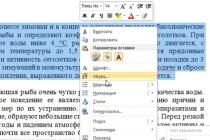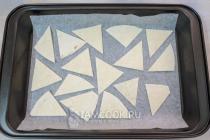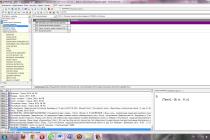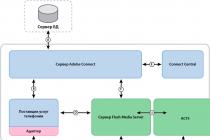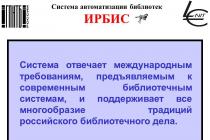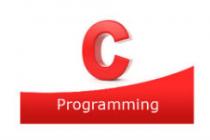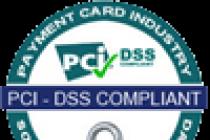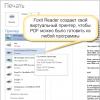
Library automation system IRBIS Work in any networks without limiting the number of users; Full integrability into corporate library systems and technologies based on: Web technologies and Z39.50 protocol support; full compatibility with the international formats UNIMARC, USMARC and the Russian communication format RUSMARC;

Support for an arbitrary number of databases that make up an electronic catalog; The technology of automatic formation of dictionaries with the implementation of a quick search for any description elements and their combinations; Means for maintaining and using authority files, an alphabetical-subject index to the UDC / LBC and thesaurus; Support for traditional paper technologies: from printing a summary book to printing all types of index cards; Library automation system IRBIS

Support for technologies using barcodes on copies of publications and library cards; Support for full text, graphic data and other external objects (including Internet resources); Tools for translating user interfaces into other languages; Use of multilingualism based on UNICODE IRBIS library automation system

Formal and logical data control, including spelling; A wide range of service tools that provide convenience and clarity of user interfaces, simplify the input process, eliminate errors and duplication of information; Ample opportunities for adaptation to the working conditions of a particular library, including the means of creating unique working profiles for all categories of users; Openness - allowing the user to independently make changes in a wide range: from changing input and output forms to developing original applications.

Library automation system IRBIS Composition of products of the IRBIS32 family 1. Mini-IRBIS Administrator Cataloguer Reader 2. Six modules of basic delivery Administrator Picker Cataloguer Reader Book availability remote Internet search with Z component Universal interface for classification systems

Library automation system IRBIS Composition of products of the IRBIS64 family 1. Five modules of the basic delivery + server Administrator Picker Cataloger Reader Book lending TCP / IP-server 2. Special modules for full-text databases Administrator Reader 3. Web-Reader - A module that provides remote search via the Internet 4 .Web-IRBIS - Module providing remote search via the Internet with the Z39.50 component

Library automation system IRBIS ARM Administrator Performing operations related to maintaining the IRBIS databases in an up-to-date and saved state, As well as: Setting up and creating user profiles on the basis of special tools.

Library automation system IRBIS AWP Picker Preliminary description and execution of order documents; Tracking the execution of orders; Registration of literature receipt; Automated transfer of descriptions for cataloging; Subscription of periodicals for library departments (subscription cards and order sheets); Transfer of descriptions of periodicals to the Electronic Catalog after receiving the first issue of the issued edition with the subsequent registration of the next receipts in the AWS Cataloguer; Automatic subscription for the next subscription period; Writing off literature; Typical output forms.

Library automation system IRBIS ARM Cataloguer Processing and description of any types of publications; Original technology for describing periodicals; Automated technology for linguistic processing of publications; Special technology for copying data, eliminating the need to re-enter; System of formal and logical data control; Original technology of automatic doublet checking; Output forms; Technology for input and presentation of any characters.

Library automation system IRBIS ARM Reader Comfortable, friendly interface; Taking into account various levels of user training; A wide range of search tools that provide a quick search in the database for all the main elements of the bibliographic description and their combinations; Working with multiple databases; Paperless technology of forming an order for the issuance of literature; Sorting search results (when viewing and printing) according to various criteria.

Library automation system IRBIS ARM Book lending Technology of forming and maintaining a queue of electronic orders for issuing literature and fixing their execution; On-line information about free copies, issued literature and readers; Literature return recording technology; Technologies for issuing without ordering, issuing without EC, renewal; Maintaining all information about the issuance / return in the readers' records; Obtaining statistical information; Special technology of book distribution based on bar-coding of copies and library tickets;

Library automation system IRBIS AWP Book availability Designed to automate the joint operation of electronic catalog databases and databases containing data about the university: Maintaining a special database containing data on the educational process: disciplines, student contingents, structural elements of the university. The interface displays the current state of the databases in their relationships. Search tools in each database, displaying links between one database and others, displaying tables of book availability ratios, means of transferring data from one database to another, database control tools. Modules for input / adjustment, formation of tabular forms, execution of batch jobs, logging of work.

Library automation system IRBIS Subsystem of full-text databases 1. Extended AWS "Administrator", including additional modes for working with full-text databases. 2. ARM of the end user (reader) for searching and viewing in full-text databases with the implementation of special search algorithms: Search by query in natural language. Ranking of found documents by their relevance. Search for similar texts in a user-defined thematic context.

Library automation system IRBIS Web-IRBIS Unified technology for servicing local and remote users; Use of a single bibliographic array for technological operations, and for servicing local and remote users; Availability of a system for automatic recognition of the encoding of an incoming client; Ability to work with any number of databases; Possibility of forming a request in a fixed and free form using information retrieval operations; Ability to use any user-defined output formats; Z - component.



Library automation system IRBIS Deliveries and versions of the system Version for work under MS DOS Demo version Mini-IRBIS Modular delivery Basic delivery Extended delivery Full delivery Special deliveries for medical libraries New versions of the system - every 6 months

Library automation system IRBIS Pricing policy of the Component Cost (excluding VAT) (USD) IRBIS system (basic delivery) 2800 AWP Administrator 500 AWP Picker 600 AWP Cataloger 600 AWP Book distribution 500 AWP Reader 600 AWP Book availability 600 AWP MBA 600 Mini-IRBIS 700 Web-Reader 1200 Web-IRBIS 1800 TCP / IP server (10 users) 600 Modules for full-text databases 1400


Library automation system IRBIS Pricing policy (different if) IRBIS32 If you have IRBIS under MS / DOS - 50% If you have Mini-IRBIS - its cost is deducted IRBIS64 If you have IRBIS32 - only the cost of a TCP / IP server Subsystem of full texts If you have You IRBIS64 - the cost of the AWP Administrator is deducted ($ 500)

IRBIS library automation system Maintenance and training - Warranty support - within the delivery cost - Post-warranty support - 12% of the catalog price per year - Maintenance includes: Delivery of new versions Answers to questions and consultations on all types of communication - Open forum for for all users and non-users - Permanently operating "IRBIS School" (full-time and remote) with the issuance of a Certificate of the established sample for the licensed course "Computer technologies in libraries" - Continuous consulting sessions at the International conferences "Crimea" and "Libcom" - Offsite scientific and practical seminars

Library Automation System IRBIS Figures and Geography - More than 1200 users; - The system works in libraries of various levels and types in: Azerbaijan Armenia Belarus Great Britain Georgia Israel Kazakhstan Kyrgyzstan Russia USA Uzbekistan Ukraine - The system is distributed by 31 representatives Automation system bib 26

Replacing the old one.
The instructions contain notes for the case of transition to a new version of the software. IRBIS 64 full-text databases.
In some cases, additional steps are required. Such cases and necessary actions are described in the corresponding subsections.
Instructions for upgrading to a new version of the IRBIS 64 software
1. Execute export (using AWP Administrator) for each database of the system into which you entered data (that is, in which you made any changes). Note: when exporting, the switch encoding UTF8... Do not set the reformatting FST, the output format is text. Save the received files (ibis.txt, ...., cmpl.txt, rdr.txt, etc.) (outside the limits of IRBIS system placement on the hard disk!).
Note for the case of IRBIS 64 full-text databases: export each full-text database of the system.
2. Save all parametric files in the database directories that you changed yourself or that were customized by the developer especially for you (kp.mnu, krv.mnu, mhr.mnu, rubin.mnu, rzn.mnu, stt.mnu, tp.mnu, uzf.mnu, etc.). Also save all personal INI files and the file with the list of registered users \ DATAI \ CLIENT_M.MNU. (Save the files outside the limits of the IRBIS system location on the hard disk!)
Note for the case of IRBIS 64 full-text databases: save the full text files that are in the database directories.
3. Remove the IRBIS 64 server service by executing the command line on the IRBIS server part:
Service_64.exe / UNINSTALL
Then delete all data of the IRBIS 64 system on the disk (the IRBIS64 directory and its contents on the server and at clients).
Note for the case of IRBIS 64 full-text databases: deleting the service does not apply to the case of reinstalling IRBIS 64 full-text databases.
4. Install the new version of the IRBIS 64 system.
5. Empty all databases of the system (using AWP Administrator), into which you entered (IBIS, RDR, RQST, CMPL, etc.). Create additional databases of the Electronic Catalog (using AWS Administrator) that you created yourself - everything except IBIS.
Note for the case of IRBIS 64 full-text databases: for the case of full-text databases, the role of the IBIS demo database is played by the full-text TEXT database.
6. Carry out the import (using AWS Administrator) for all databases of the system using the files saved under item 1. Attention: when performing import, the switch encoding must be set to position UTF8, the output format is text, and the options FORMAL LOGICAL CONTROL and AUTO INPUT- disable. Do not set reformat FST.
Attention (for users of the MeSH thesaurus when transferring a database from IRBIS 32 to IRBIS 64): when importing, use MESH32 as a REFORMATIZATION TVP.
7. Restore all files saved in step 2.
8. Create a new dictionary completely (using AWP Administrator) for all databases in the system.
Additional actions for AWP Book availability: when switching to version 7.1 and higher from a version lower than 7.1 for IRBIS 32; when switching to version 6.2 and higher from a version lower than 6.2 for IRBIS 64
Follow these steps:
- In the old AWS Book provision in the DOCUMENT TYPE dictionary, mark the types of the document DUNIK, FAK, VK, UPL.
- Call the GLOBAL module, select the DELR statement - delete a record.
- Cancel updating, automatic input, FLC, protocol.
- Make adjustments.
- In the old AWS Administrator for the VUZ database, export to a file.
- In the new Administrator's workstation for the VUZ database, perform: emptying the database, importing the file from the previous point without automatic input and without FLC, creating the dictionary again.
- In the new ARM Book availability in the VUZ DB dictionary DICTIONARY TYPE mark the VUZ records, call the GLOBAL one, perform the CreateFAK task with updating (it is possible without automatic input).
Additional actions when upgrading to version 2013.1 (and higher) of IRBIS 64 software for full-text databases from a version lower than 2013.1
If among the texts that were added to the full-text database, there are PDF or DJVU files that were added without pagination (or added from an electronic catalog), then such a database must be created and generated anew (that is, it is necessary to re-add texts).
MBUK CBS Divnogorsk
Central City Library
Information and bibliographic department
Workshop on working in the Irbis-64 program
AWS "Cataloguer"
Analytical list of articles
from periodicals
A practical guide
Divnogorsk 2013
Compiled by:
Solovieva Elena Sergeevna,
Olga Shvets
Editor:
Bondarchuk Margarita Genrikhovna
Responsible for the release:
Gridina Lyudmila Kuzmovna
From the originator
IRBIS is a modern library automation system designed for use in libraries of any type and profile. Allows you to describe all types of publications. The system interfaces are as close as possible to the user's needs and are easy to learn. AWS "Cataloguer" is an automated workstation for a librarian who performs the functions of creating and maintaining databases.
This practical guide is intended for organizing work in the AWS “Cataloguer” of the IRBIS 64 library automation system.
The aim of the manual is to familiarize you with the basic principles of creating an analytical bibliographic record in the "Cataloguer" module.
The manual is intended for specialists who are just starting to work in this program, librarians, bibliographers already working in the automated workstation "Cataloguer" of the "IRBIS 64" library automation system.
Registration of periodicals in the Irbis-64 program
1. Before creating an analytical bibliographic record, it is necessary to register a periodical. To do this, select the Newspapers and Magazines database. (We register only if the publication is new and has not been previously registered)
2. Then select the worksheet "OQ51 Journal Description and Enter First Admission Information".

3. Then on the left, open the dictionary and select the item "Title - magazines".

4 .
Open the "Parameter Settings", the "Personal Settings" window appears. In the column "Stage of work", press the button
.
Open the "Parameter Settings", the "Personal Settings" window appears. In the column "Stage of work", press the button
And choose RJ - registration of magazines. Click "Apply".
5. In the dictionary, in the "Key" field, enter the title of the journal, for example: "Technology for youth".

! We draw your attention to the mandatory check of the periodical!
We draw your attention to the mandatory check of the periodical!
We check the registration of the previous issue of the periodical in the window  , press the button "numbers", and a window with registered numbers opens, then making sure that the journal is not registered, press the button "cancel" and start registration.
, press the button "numbers", and a window with registered numbers opens, then making sure that the journal is not registered, press the button "cancel" and start registration.

7. In the window, press the button "register", a window opens and in the field "936: Number, part" enter the number of the journal.

8. Then, in the field "910: Information about instances", press the button, the window "Element: 910: Information about instances" appears. We put the status “0”, in the field “No.” we put it in the field “Date” - hold down the alt button and press the letter D on the keyboard. In the "Storage location" field, indicate where the copy is stored. Press enter and the "Save" button! We check the bibliographic record and other elements of the description.

Creation of analytical
bibliographic record
1. Open AWS "Cataloguer". We select the database (database) in which the records will be saved.

2. Then select the RL (worksheet) ASP42 - Analytical description of the article (complete), format - optimized.

3. The page "Duplicate" is intended for checking the newly entered document for duplication. Therefore, if you need to enter another record in place of the detected doublet, you need to:
delete or change the data value in the field on which the cursor is located (this, of course, removes the duplicate message);
"Empty" the document;
enter new data. After checking for duplication, on the same page, fill in the following fields:
The field is intended for entering information about the author, if the article was written by one author. For articles written by two or three authors, in field 700 the first of these authors is given. Information about the second and third authors is reflected in field 701.
In the underground 700 we press the button, after which a window opens.
5. In the window that opens, fill in the Surname, Initials, Initials Expansion, Additions to names, except for dates (titles, epithets, positions), etc.
6. Field 200: Title
This field is required. Enter the main title of the article. The title proper is reproduced in its entirety as given in the publication. We fill in the subfield "Information related to the title" - this is information that explains the content of the article.

If from the title of the article it is not clear what the article is about, we formulate the content of the article ourselves and put it in square brackets.
For example: [About bibliographic search methodology]
First information about responsibility - the subfield is filled in automatically from the field 700 and 701.
Since we originally registered the publication, all the necessary information about the magazine or newspaper is transferred automatically.
In this field we enter only pages, on which the article is printed, we enter without the letter "c". A hyphen is placed between the numbers in the page designation, there are no spaces.
The digital designation of the magazine is given in Arabic numerals.
Main BO page
There is a small button at the end of the field  , when you click, a window appears where the required fields are filled in. A unit opposite a field means that the field is repeated as needed.
, when you click, a window appears where the required fields are filled in. A unit opposite a field means that the field is repeated as needed.
Technology page
We fill in fields 907 - Cataloguer, date and 902 - Document holder. V 907 field the dates of the stage-by-stage processing of the document and the full name of the contractor are indicated. These data are an important element of accounting for the work of cataloguers, both in terms of assessing the quantity and quality of work performed.
On the Technology page in Field 905 - Setting. QC circulation ... you can specify how many main and / or additional QCs (circulation) need to be generated when batch printing QCs. Specified as two numbers separated by "/" (no spaces). For example, 6/2 (the batch can process a circulation of no more than 10 main CCs and no more than 5 additional ones).
Systematization page
We consistently fill in the fields we need.
This field is required. It is repeated if necessary. Only one LBC index is entered in one field. LBC indices, separated by the "+" sign, are written into the re-created fields by pressing 1.

Field 606 - Subject Heading
This field is required. It is repeated if necessary. Geographic, chronological, thematic subheadings can optionally be added.
Field 610 - Keywords
This field is strictly required. Repeat for each keyword field 610. The keywords are formed by the bibliographer independently. Used to expand search capabilities.

Field 600 - Name of the person as a subject heading (Personnel)
The field is repeated. This field is required. The field contains information about persons when they are the object of consideration in the article. Initials are entered in field 600а separated by commas and a space after the surname. If there are several personalities, then a new one is added to enter information about each person field 600.
Field 331 - Annotation
An annotation on the article is entered in the field.

After completing the formation of the record in the right corner you will see a catalog card. It is necessary to check the correct sequence of the elements of the bibliographic description. Edit if necessary. Save the entry by clicking on the "Save" icon in the upper left corner  .
.
QC Print Mode
At the end of the work with the document, you can print catalog cards of all types (in the required number of copies) for printing. Previously, before switching to the "QC PRINT" mode, it is recommended to look at the document in the "Set of catalog cards" format in order to determine whether additional and / or reference work cards are generated for it; Program corrective work ... AWP ... 64 By school ... workshops on improving pedagogical professionalism and personal qualities of teaching staff; - was carried out Work on ...
L. A. Eliseeva © Federal State Budgetary Institution of Science State Public Scientific and Technical Library of the Siberian Branch of the Russian Academy of Sciences, 2013
Pointer... works on interdepartmental regional scientific program... Kemerovo: KREOO " Irbis", 2006. - 238 p. - ... 30 00.370. Workshop on botany: textbook. ... battles of Red Armies in Belarus ... v. 63, No. 1-6. 2005, t. 64 , No. 1–6 1306. Proceedings of the Russian Academy ...
State Public Scientific and Technical Library
(State Public Library for Science and Technology of Russia)
International Association of Users and Developers
electronic libraries and new information technologies
(Association EBNIT)
Web-IRBIS 64
User guide
State Public Scientific and Technical Library of Russia
Moscow 2005
UDC 025:65.011.56
BBK 78.30
Web-IRBIS 64. User's Guide - M.: State Public Library for Science and Technology of Russia, 2005. - 44 p.
The software of the Web-IRBIS 64 system is designed to provide Internet users with access to electronic catalogs and other bibliographic databases of the IRBIS64 library automation system. The Web-IRBIS 64 system is a typical integrated solution in the field of library technologies automation and is intended for use in libraries of any type and profile to be used as one of the main components of library Internet servers and Internet complexes. The system fully meets the international requirements for such systems and supports all domestic bibliographic standards and formats.
ISBN 5-85638-028-2© State Public Library for Science and Technology of Russia, 2005
© Association EBNIT, 2005
Chapter 1
INTRODUCTION TO WEB-IRBIS 64
General information
Web-IRBIS 64 software is designed to provide Internet users with access to electronic catalogs and other bibliographic databases prepared using the IRBIS64 system. The Web-IRBIS 64 system is used as one of the main components of library Internet servers and Internet complexes (BIC).
Main system characteristics of Web-IRBIS 64
Unified technology for servicing local and remote users.
The ability to use a single bibliographic array, both for technological operations and for serving local and remote users.
Ability to work with any number of bibliographic databases.
Wide possibilities of customization and creation of the most user-friendly environment for a particular library.
Ability to use any user-defined output formats, including RUSMARC, UNIMARC, USMARC.
Basic operations of Web-IRBIS 64
Search in an arbitrary database with the IRBIS64 structure by an unlimited number of fields, by any description elements and their combinations, using the logic "AND", "OR" and "FULL PHRASE" , with the ability to define prefixes and qualifiers for search terms, grammatical normalization of Russian words and the use of the truncation apparatus.
Refine search in previous search results by a condition (sequential search)
Sort search results by conditions
Storing made orders with the possibility of editing ("basket" mode of orders).
View the status of the reader's form in real time.
Use in the search of static dictionaries and rubricators included in search forms or connected from the outside, with the ability to combine elements of dictionaries with any other search prescriptions.
Using dynamic database dictionaries, with the ability to obtain a list of dictionary terms and then search for the selected terms; navigation through dictionaries, including the task of starting scanning by the first characters, and in terms of "next", "previous".
Display of records from an arbitrary database in all types of standard formats, including information, in the form of a catalog card, in tags and decrypted RUSMARC, UNIMARC, USMARC. It is possible to use any formats defined by the user in the IRBIS notation.
Quantization of the output records in a user-defined format, followed by navigation in terms of "next", "previous".
Selecting records from among those found, with their subsequent processing, including unloading selected records in standard RUSMARC, UNIMARC, USMARC formats.
The software was developed in such a way that all functions and capabilities are fully controlled by the administrator of the library information complex, including setting up search forms, adding and removing search fields, setting up their attributes, including rubricators and static dictionaries.
During the development of Web-IRBIS 64, special attention was paid to additional service functions aimed at improving user service and integration within library and interlibrary technologies through the library information complex.
This is especially important for getting closer to modern technologies of remote service of readers and electronic libraries. It is known that typical library information systems have a significant drawback - a gap in the search technology and subsequent access to the found primary sources. Of course, the situation is quite inconvenient for the user when he can find a description of the publication he needs, regardless of time and geographical conditions, and cannot then use modern communication technologies to obtain the document he needs.
To address this issue, elements of support for electronic delivery of documents and direct access to full text (if any) from search results were introduced. This, of course, took into account the legal restrictions associated with the need to comply with copyright, i.e. the placement of full-text documents and the conditions for their use on the Internet passed the required agreement with the copyright holders.
It should be noted that the opportunity has been created to use different modes of access to databases. For this, in the process of research and development, 3 basic modes were introduced, the properties of which can be combined and redefined for each specific Internet complex.
It should also be emphasized that the technology of authorized access is not built on the level of standard methods of Web servers, but on the basis of original solutions using dynamically generated pages and libraries of form files. This was implemented in order to expand the ability to adapt to specific conditions and increase resistance to unauthorized interference.
The next important feature of Web-IRBIS 64 is built-in support for including links to full texts of documents in the electronic catalog and database. At the same time, a free technology of forming links in the form of URLs has been implemented, which allows using this solution not only to form your own collection of full texts, but also to catalog and include Internet resources in the database, which is extremely important in modern conditions. Thus, Web-IRBIS 64 can be used as a basic technology for creating virtual and electronic libraries.
The process of creating links is quite simple and is fully integrated with the technology of creating a catalog description of IRBIS: when formatting a record, a standard link is automatically generated and a direct link to the full text of the document appears in the description.
The advantages of Web-IRBIS 64 include a high speed of execution of queries of varying degrees of complexity.
The Web-IRBIS 64 system provides support for extended and nested formats, which was not available in previous implementations, setting the output parameters; allows the possibility of using advanced means of forming queries, the use of several terms in one field; has advanced service functions.
Main software and technological components

Rice. 1. General functional block diagram of the operation algorithm of Web-IRBIS 64.
Rice. 2.1. Block diagram of Web-IRBIS 64 operation.
Displaying New Arrivals Section IBIS_EX provides display of advanced search page and display of dictionary terms. The display of search results is set ONLY in the IBIS section, which allows it to be unified. On the other hand, this makes it impossible to transfer the I21DBN parameter by format to the search form.
The Web-IRBIS 64 system is based on the following set of main components (see Fig. 1):
A module for providing communication between a Web server and a database, created on the basis of CGI (Common Gateway Interface), which allows the software to work with any servers that support this technology, which is the standard for running applications on the Internet. Modules using CGI are executed in the form of executable programs, API - in the form of dynamic libraries. These modules are the only ones specific to various Web servers — all others are independent of the type of servers specified and the communication methods.
The modules for searching and formatting results are common for Web-IRBIS 64 and IRBIS64, and are made in the form of dynamic libraries. They are controlled by the communication module and provide search and output of preformatted results in accordance with the transmitted parameters. The final formatting and conversion to HTML is done by the link module.
The Form File Library is the backbone of secure authorized access technology. The developed algorithm will make it possible not to permanently store search pages and pages for displaying results - they are created when a request to perform an operation is received and are deleted after the process is completed. Therefore, it is impossible to make unauthorized access to all modes from the Internet by direct URL (universal locator - resource locator).
Technological databases. Contains information about registration of remote users and received orders.
Static page tree. Used for initial study and as examples to design your server. The Web-IRBIS 64 system is a reliable and convenient platform for the implementation of library Internet applications and their subsequent integration into a single library Internet complex.
Differences between Web-IRBIS 32 and Web-IRBIS 64
& unifor ("+ 3E" - translation into URI format for transmission to the server.
& unifor ("+ 3D" - translation from URI (used by the gateway when working with the GET method).
& unifor ("+ 3U" - translation of ANSI to UTF8 - is used in WEB IRBIS32 to generate links in UTF8 encoding.
& unifor ("+ 3+" - translation of the + sign in% 2B for the correct transmission of a search query containing the OR logic by reference in the S21ALL parameter - a search query in the ISIS language.
The ini file, gateway and frame storage folder names are suffixed with the corresponding version. For example, cgiirbis_64.exe - cgiirbis_32.exe, i - i. This difference is necessary for a possible simultaneous installation of 2 versions.
All frames of the two versions are in utf-8 format. In the ini file it is possible to change the encoding of frames and search links to WINDOWS-1251 (ANSI). The possibility of independent encodings for frames and links is due to the fact that search links must be written in the URI format, which is transmitted in UTF-8 in Latin (just like in WINDOWS-1251) There are special unifors for working with encodings:
In whatever encoding the frames are stored, the gateway produces the output in UTF8 encoding, which allows showing diacrites in IRBIS32 when formatting the found records.
The difference in the data storage format of IRBIS64 and IRBIS32 leads to a difference in the formation of search links, if their encoding is set to UTF8. In IRBIS 32, it is additionally necessary to translate the link into UTF8 using the & unifor format ("+ 3U". Web-IRBIS 64 - is constantly being improved and modified, new functions and capabilities are being added, integration with other subsystems of the IRBIS64 series is deepening. User support is provided as in the traditional way and via an Internet conference ( http:// irbis. gpntb. ru).
The developers will be grateful for any comments and feedback, as well as for advice on the further development of the system. Write to Mikhail Goncharov ( goncharov@ gpntb. ru) and Konstantin Sboychakov ( [email protected] ).
Installation of Web-IRBIS 64
General remarks
To install the software on the server, you need to run the program wsetup64 r. exe included in the package. If you do not have a Web-server installed, then, before installing Web-IRBIS 64, you need to install it. All questions related to the use of servers are not the subject of this manual and should be resolved in accordance with the server documentation.
The general view of the installation directory is shown in Fig. 2.

Rice. 3 The root directory of the distributionWeb-IRBIS 64.
Before installing the product, it is necessary to determine and install (if necessary) according to the instructions the version of the operating system of a number of Windows and the http server (IIS, Apache, etc.). Various flavors of Windows and http server versions are currently supported.
Windows 2000 + IIS
Windows 2000 + Apache
Windows XP + IIS
Windows XP + Apache
Windows 2003 + Apache
Unlike previous versions, installation paths are not automatically detected and require manual configuration of paths for the directory of HTML files and CGI scripts. You need to define these directories in advance and set the paths when prompted. Besides, it should be borne in mind that the presence of the IRBIS64 server is required and during installation it will be necessary to enter the path to its configuration file.
By default, test and service databases are located in the directory of the IRBIS64 server. You can change these paths in the config file irbis_server. in, which the always located from the root directory of the operating system (C: \ Windows, C: \ WINNT).
It is allowed to use network paths defined in a standard way.
It should be remembered that the tree of HTML-pages of Web-IRBIS 64 in order to save user data is placed in a special directory inside the root directory of HTML-files of your http-server. Therefore, the call to Web-IRBIS 64 is carried out as follows: http: ///Irbis64r/index.html. You can change the location of the Web-IRBIS 64 directory either during installation or when it is necessary by standard methods of moving nested directories with appropriate changes to the i.
Standard installation procedure
To install the full suite of programs, you need about 6MB of free disk space. If an earlier version of Web-IRBIS 64 is already installed on your machine, it is recommended to make a backup copy of the system components. Usually these are form files created or modified during the adaptation of the system, formats and parameters in irbis_ server. ini... To start the installation procedure, you need to run the setup.exe program from the root directory of your distribution kit (see Fig. 3).
The installer contains two screens.

Rice. 4. The first screen of the Web-IRBIS 64 setup program.
It should be remembered that for different http-servers it is necessary to select the execution option for CGI scripts. The default (except for using IIS) uses the standard CGI and POST request method, which work best on most http servers.

Rice. 5. The second screen of the Web-IRBIS 64 installation program.
The following paths must be specified (see Fig. 5):
Path to the parametric file of the IRBIS64 server- this file contains paths to databases, access to which will be allowed through the Web interface, to files for working with databases, paths to configuration files for Web pages, temporary files
Root directory of CGI programs and root directory of WWW page- respectively, the paths to the root directories of the http-server, in which the executable programs (CGI, SCRIPTS) and the directory for HTML documents are located, respectively.
Gateway type- an executable module (exe) or DLL.
The following directories are created
The frames_r \ ibis folder with the MAIN, MAINEX, MAINRDR, MAINRQST, MAINZAKAZ subdirectories is created along the DATAI path from the ini file of the IRBIS64 server
An Irbis64r folder is created in the htdocs directory of the WEB server with subdirectories for scripts and images
The Irbis64r folder is created in the cgi (or scripts) directory of the WEB server
The i file is written to the WINDOWS directory
The following files are added to the IRBIS64 databases:
The following files are added to the IBIS database directory
Free_ekz.pft, fullwebr.pft, insert_export.pft, insert_file_author.pft, insert_search_result.pft, mfull.pft, referings.pft, web_dict.pft, WebNews.pft, zakaz.pft, avhead.srw, dkv.srw, dp. srw, dz.srw, god.srw, tipvid.srw.
The following mful.pft files are added to the RDR database directory
The following files basket.pft, rqst_web.pft are added to the RQST database directory
Upon successful completion of the installation procedure, a message appears on the screen.
Rice. 5. Message about successful completion of the Web-IRBIS 64 installation process.
Then it is necessary to test the operability of the resulting configuration of the software package.
Checking the program's functionality after installation
On the screen after entering the address http: ///Irbis64r/index.html the main screen of the Web-IRBIS 64 system should appear (see Fig. 6).
R 
is. 6. Start pageWeb-IRBIS 64.
If the main screen of the Web-IRBIS 64 system is not displayed, then it is necessary to check the operability of your http-server and the correctness of the path setting in the browser and in the file irbis_ server. ini... If necessary, you need to manually adjust the paths in the configuration files or the menu of the http server and irbis_ server. ini.
Then you need to check access to the sections. In case of impossibility of displaying, carry out the actions described in the previous paragraph.
After that, it is necessary to check the operability of the main mode - (see Fig. 6.). If the paths of the working directory of the programs are set incorrectly, the transition to the construction of the search form is impossible. In this case, you need to match the real paths and paths in the file irbis_ server. ini.

Rice. 6. Page of free access to the IRBIS database.
If the search form is displayed correctly, you need to check the different search modes.
Search results are displayed on a separate page (see Fig. 7.) in accordance with the request, in the form that the user needs. The free access to the IRBIS database is described in more detail in Chapter 2.

Rice. 7. Search results page.
If the search fails or is not performed correctly, you need to verify that the paths are set correctly and that the access requirements are met. It must be remembered that Web-IRBIS 64 requires the ability to write, create and delete files in the database directory of the IRBIS64 server, defined by the http-server. For most http servers, no additional steps are required to do this. The exception is IIS, for which you need to perform additional operations (see. below)
If any of the above actions did not lead to the localization of the problem, you need to report this to the addresses [email protected] and goncharov@ ... The letter must be accompanied by information about the version of the product, a configuration file irbis _ server . ini and a detailed description of the problem.
Chapter 2
CONFIGURING WEB-IRBIS 64
Features of Web-IRBIS 64 operation
In general, the solution functions as shown in Fig. eight.

Rice. 8. Functional diagram of a typical solution.
The work of Web-IRBIS 64 is based on the use of form files. The request processed by the CGI program generates a response in the form of another HTML form for further work. The answer builds on the predefined form files. To construct a response to a CGI request for each command, the sequence for outputting form files defined in file i is used. These output sequences form a complete HTML page. The output sequences are described below.
The main and only parametric file of Web-IRBIS 64 is i, which is located in the Windows system directory (for example, winnt, winxp, etc.).
The variant offered in the delivery base is a fully functional example of using the basic default database IRBIS64 (ibis). To connect other databases, it is necessary to make changes to the form files and perform additional settings. For a simple solution to get you started, we recommend simply copying your electronic catalog into the ibis database.
Basic commandsWeb-IRBIS 64
Show vocabulary terms (T).
Displaying a set of frames (F).
For each command in parametric file i there is a hard decryption (name): F = ShowFrames, S = SearchFrames, T = DictionryFrames, Z = ZakazFrames.
Each name corresponds to a value in the form of a string, in which frames are listed separated by commas in the order they are displayed after the command is executed. These commands can be defined differently in different sections for different databases. At the same time, any number of functionally different partitions can exist for one database. The section name is specified by the I21DBN = parameter in the parent link argument string. The command is specified in the same link by the C21COM = parameter. A full description of the possible parameters is given in Table 2.
The Search (S) "- displaying search results and the command" Displaying a set of frames (F) "- provide displaying of a set of frames in a given order and displaying search results.
The difference between these commands is that if the search result is zero, the SEARCH command returns a text message that is taken from the webmsg.txt gateway message file. In the distribution, this is an EMPTY ANSWER.
NS 
Example from the section. ShowFrames = header_1.frm, menu_2.frm, search_4.frm, rubrics_5.frm, News_6.frm, RESULT, footer_7.frm.
Rice. 8. Page of free access to the IRBIS database.
In this case, the main search page of the distribution is shown, which is called by the link DP = 200302% 24<.>">
Additional parameters in the link S21FMT = and S21ALL = provide search and display of new arrivals. By changing the set and sequence of frames, you can change the look and functionality of a dynamic page. For example, let's remove from the sequence the rubrics_5.frm frame, which is responsible for displaying a fragment of the GRSTI rubricator. The result is shown in the figure.
Similarly, you can add, change and remove any frames.
Rice. 9. Changed page of free access to the IRBIS database.
The special name of the RESULT frame defines the point of issuing search results - after which and before which frame the formatting results of the found documents will be inserted.
Command"Displaying vocabulary terms (T) ”Shows vocabulary terms
The dictionary is displayed starting from the term specified by the parameter using the format specified in the parameters of the search form DICT_FORMAT = (by default - web_dict). Dictionary terms are displayed as links that provide a direct link to relevant entries. If you need to search for several terms, you need to mark them or enter them into the "Selected terms" input element by clicking the "Return" button. Navigation through the dictionary is carried out using the "Dictionary" button and the "Key" input element, which sets the term from which the next portion is displayed.
Rice. 10. Page showing the dictionary of the IRBIS database.
The command "Order (Z) "(Requires authorization). Carries out an order for one edition from the list of found ones.
Before placing an order in the distribution kit, a special form is issued in which it is required to indicate the reader's identifier to confirm the order. In the distribution kit, this form has additional optional fields as an example of ordering.
R  is. 11. Page showing search results.
is. 11. Page showing search results.
The required parameter is Z21MFN = order record number.
The functions "My form" and "My shopping cart" are available after authorization and provide display of previously issued literature and the status of the user's orders. In this case, orders can be removed from the basket.
leadership and intrasystem book exchange, ... the professional community. The quality of the offered users information - regulatory, ... for testing the program Web- « Irbis – 64 "... Based on it ...
Research and development of means of ensuring the interoperability of electronic information resources of scientific information
Study... users Internet to electronic catalogs and other bibliographic databases IRBIS. Web-IRBIS... I recommend that you read the relevant section of this guides: "The work pulls for a doctorate" ... - 29-30 lines, 62- 64 character in the line. When dialing ...
I r b and s 6 4/1 2 8 general description of the system
DocumentLocal DB IRBIS64 , DB WEB-IRBIS 32/64 , DB Z39.50, DB IRBIS 128, RAIDB ... in the Library Automation System documentation IRBIS... AWS "Cataloguer". Managementuser... If the reformat table is not ...
"Creation of a corporate network of Moscow public libraries"
DocumentAccess to interested users background information, ... 64 Kbps 64 Kbps - 56 Kbps 56 Kbps 64 Kbps 64 Kbps 64 ... namely: Web-IRBIS- a solution providing ... records. (Appendix B " Manuals... ") - b- agency-two-character ...
Ministry of Culture and Archives of the Irkutsk Region
Irkutsk Regional State Universal Scientific Library. I. I. Molchanov-Sibirskiy
Scientific and methodological department
AUTOMATION OF LIBRARY PROCESSES BASED ON ABIS "IRBIS64"
Methodical materials
BBK 78.34 (2) 7
Compiled by A. V. Mironov, L. Yu. Oleinik
Automation of library processes based on ABIS
IRBIS64: method. materials / comp. A. V. Mironov, L. Yu. Oleinik -
Irkutsk: ed. Irkut. region state universal scientific. b-ki them. I. I. Molchanov-
Siberian, 2013 .-- 124 p.
The manual summarizes the experience of introducing ABIS "IRBIS" in the Irkutsk Regional State Universal Scientific Library named after V.I. II Molchanov-Sibirskiy for the automation of library processes; contains a characteristic and description of the main features of the system, examples of bibliographic description of documents, a methodology for compiling a bibliographic index using IRBIS.
The purpose of the publication is to help libraries in the process of transferring traditional library work to an automatic mode to meet the increasing information demands of readers.
© Irkutsk Regional State
universal scientific library
them. I. I. Molchanov-Sibirskiy, 2013
FROM THE CONTRACTORS
A characteristic feature of the current stage of development of librarianship in Russia is the so-called “digital divide” (“information inequality”). While in one library almost the entire collection is entered into an electronic catalog and full-scale automated services for readers are carried out (including book lending, informing about new acquisitions, etc.), in another, automation takes its first timid steps: the automated library information system (ABIS) acquired just the other day, librarians are reading the dry lines of the installation instructions, trying to enter the first bibliographic descriptions.
Bridging this digital divide is a top priority for the library community. A reader “from the hinterland” should receive the same full-fledged access to library services as a resident of the capital.
The most important tool for eliminating the information inequality is the exchange of professional experience, the accumulation of this experience in the professional press and its dissemination in the librarian community.
This manual contains 10 years of experience in the use of ABIS "IRBIS" in IOGUNB them. II Molchanov-Sibirskiy for the automation of library processes: a brief description of the system is given, its main features are listed, examples of a bibliographic description of the main types of documents are given, a method of compiling a bibliographic index using "IRBIS" is given.
The manual is intended for libraries embarking on the difficult but exciting path of library automation. We hope that it will help to translate into a practical plane the discussion of many aspects of the implementation of ABIS "IRBIS64" and thus improve the quality of information services for library readers.
INSTALLATION AND ADJUSTMENT OF IRBIS
Fundamentals of ABIS "IRBIS"
The automated information and library system (ALIS) "IRBIS" is a system of complex automation of library processes, built on a modular basis. "IRBIS" is a typical integrated solution for the automation of basic library processes and is intended for use in libraries of any type and profile.
Having an optimal price / quality ratio, IRBIS has gained wide recognition in the community of professional librarians (this is evidenced by the diagram below, which shows the dynamics of distribution of ALIS in the Russian Federation).

Opportunities of "IRBIS". ABIS "IRBIS" covers a fairly wide range of library technological processes:
Acquisition, subscription;
Cataloging;
Registration of readers, book lending;
Reference and information services (including IRI / DOR);
Systematization and classification;
Full-text databases;
Interlibrary Loan;
Corporate interaction;
Image catalog as a means of accelerated retro conversion;
Web gateway (including with the ability to order literature online), Z gateway;
Advantages of "IRBIS". ABIS "IRBIS64" has many advantages:
Work in any networks using the TCP / IP protocol (however, rather strict restrictions are imposed on the quality of the network infrastructure);
There is no limitation on the number of users who have simultaneous access to the EC (see below about the limitation on the number of librarians connecting to "IRBIS64");
Full integration into corporate networks: import from corporate projects "LIBNET" and "Irbis-corporation" is built directly into AWS "Cataloguer", import from Z39.50 catalogs, Web-IRBIS catalogs, import and export of records in ISO 2709 format and much is supported other;
Support for the Z39.50 protocol both as a client and as a server;
Compatible with standard UNIMARC / USMARC / MAR21 / RUSMARC formats;
Support for an arbitrary number of databases, while the volume of each database is also practically unlimited;
The technology of automatic formation of dictionaries with the implementation of a quick search for any description elements and their combinations;
Means for maintaining and using authority files, an alphabetical-subject index to the UDC / LBC and thesaurus;
Support for traditional technologies: from printing summary books to printing all types of index cards;
Support for modern technologies for the automation of library processes, including bar-coding and RFID-tags both for books / magazines and for library cards;
Support for full texts, graphic data and other external objects, including Internet resources;
Multilingual support (Unicode);
Formal and logical control of the entered data, including spelling;
A wide range of service tools that provide convenience and clarity of the user interface, simplify the input process, eliminate errors and duplication of information;
Extensibility and customizability. The user can adapt the formats and logic of the system to the needs of his library. You can create your own formats and plug-ins. You can create a database with an arbitrary unique structure (for example, a library inventory database). It is possible to customize (customize) the user interface for your own needs. You can also connect your own input aids.
History of the creation of "IRBIS"."IRBIS" is the legal successor of the "CDS / ISIS" library automation system, created in the 60s. commissioned by UNESCO. CDS / ISIS ran on IBM mainframes and was initially designed to automate internal processes at UNESCO. However, since 1985, UNESCO began to promote CDS / ISIS as a system for libraries and museums, for which the Latin American and Caribbean Center on Health Sciences Information, also known as BIREME, carried out a port of the system to MS-DOS. In 1995, he also released a Windows version called WinISIS.
Below is a snapshot of the main WinISIS window (English version). 
Through the efforts of UNESCO, WinISIS began to spread throughout the countries of the world, for which UNESCO selected several national distributors of WinISIS. In Russia, the State Public Scientific and Technical Library of Russia (NPNTL of Russia) became the distributor.
In the State Public Library for Science and Technology, the system was not only translated into Russian, but also its user interface was significantly redesigned, after which the State Public Library for Science and Technology began commercial distribution of the system under the name "IBIS" - "Integrated Library and Information System" (traces of the original name are still visible in the name of the database EC and some worksheets). However, as it turned out, “IBIS” violated the trademark of the company of the same name, therefore the name was changed to “IRBIS” - “Integrated Expandable Library and Information System”.
At the same time, from the point of view of the data storage format and the logic of their processing, “IRBIS” remained compatible with “WinISIS”.
IRBIS versions. Initially, there were two versions of "IRBIS": for MS-DOS and for Windows 95 and compatible OS. After a while, the limitations of "IRBIS" became visible, which made it difficult to use the system in large libraries:
The size of the master file could not exceed 512 MB. With intensive analytical writing of articles (especially in the framework of corporate projects), the file size quickly approached its limit.
The size of the record could not exceed 32 Kb, which is very small if there are many copies of one edition of the individual accounting in the library. There is also a problem with the registration of visits and book loans to readers - the records grow too quickly.
Working on the file-server technology, "IRBIS" transmitted too much data over the network, which led to an unjustified load on the network infrastructure and slowdown of the library as a whole;
The length of entries in the search index was limited to 32 characters, which is very small considering the so-called. prefixes.
Has no limit on the number of records in the database (more precisely, it is 4,294,967,296, this limit is unrealistic to exceed in the foreseeable future);
The maximum size of the master file is 4 TB, which is also unrealistic to exceed, unless, of course, large graphic files are included in the recording;
The maximum size of a single record is also 4 TB;
The maximum number of repetitions of one field is 65,535, which should be enough for any reasonable application;
"IRBIS64" operates on a client-server technology, which significantly reduces the amount of data transmitted over the network and, accordingly, reduces the load on the network infrastructure;
In addition, due to the transition from the ideology of shared access to folders to the exchange of data via the TCP protocol, it becomes real to connect geographically remote branches to the server;
The length limit has become much more liberal (up to 2048 bytes, which is quite enough for any reasonable scenarios);
"IRBIS64" uses the international universal character encoding UTF-8, which allows mixing texts in arbitrary languages (Russian, Japanese, English, etc.) in one database and even in one document.
Further, wherever the opposite is not indicated, we are talking about the version of "IRBIS64" of 2012 release.
IRBIS64 roster... During the development of "IRBIS64" the set of supplied AWPs and modules changed, and now it is as follows:
TCP server (central component, without which ABIS cannot function);
Local AWS "Administrator" (including AWS "Administrator of full-text databases") - can work only on the computer where the databases are physically located;
Client AWP "Administrator";
AWS "Cataloguer" is the "workhorse" of the "IRBIS" system - with its help librarians create new records and edit them. Can edit records in a database of any structure;
Workstation "Komplektator" - automates the main technological processes of acquiring library collections. To edit records, calls AWS “Cataloguer”;
AWS "Book issuance" - automates the main processes of serving readers, such as issuing, returning and renewing literature, working with debtors, etc .;
AWS "Reader" - allows readers to search and order publications from the library funds (including tracking the status of orders - "completed", "refusal", etc.), there is a related AWP "Full-text databases" for searching and viewing full-text documents;
AWS "Book supply" - automates the creation of the main output forms for the book supply of the educational process. To edit records calls AWS "Cataloguer". Applicable only in university / educational libraries;
Web gateway, Z39.50-gateway - present an electronic catalog to "external" readers on the library's website, including allowing you to create a corporate infrastructure (for the inter-borrowing of records). There is a version of the web gateway for full-text databases;
"Irbis-Navigator" - allows you to organize an arbitrary user interface of the database and a dialogue with the user based on the HTML markup language;
"Reader registration center" - simplifies the registration of readers in the library (according to the traditional technology, this happens in the AWS "Cataloguer");
"J-Irbis" - allows you to build a corporate portal of the library. It is an add-on over the popular Joomla content management system;
Various editors (for example, tabular form editor, format editor, file viewer in ISO 2709 format, etc.).
Third party development. Since ABIS "IRBIS64" is extensible and customizable, there are many user experience for it, some of which turned out to be so successful that the authors distribute them on a paid (or free) basis. Here is some of them:
Workstation "Corrector" - checks the records in the database for compliance with formal criteria (for example, whether certain fields are missing);
"Irbis-Analytica" - allows you to borrow analytical descriptions of articles directly from sites that are not suitable for this;
"Catalog of periodicals" - provides the reader with a convenient means of access and navigation through the consolidated database of all periodicals received by the library;
"Ask the Librarian" is an online virtual library reference service.
The local "Administrator" workstation can always connect to the server (the actual TCP connection does not occur, since the local "Administrator" interacts directly with the database;
Client AWP "Administrator" requires one license (but can always connect to the server, even if the license limit is exhausted);
AWS "Cataloguer" and AWS "Book issuance" require one license each;
AWS "Komplektator" and AWS "Book Provision" require two licenses each (since for any editing they start AWP "Cataloguer", which, in fact, requires a second license);
The rest of the workstations do not require licenses. So, for example, AWS "Reader" and "Irbis-Navigator" can be launched in any number of copies.
The minimum number of connections that can be purchased is 10.

